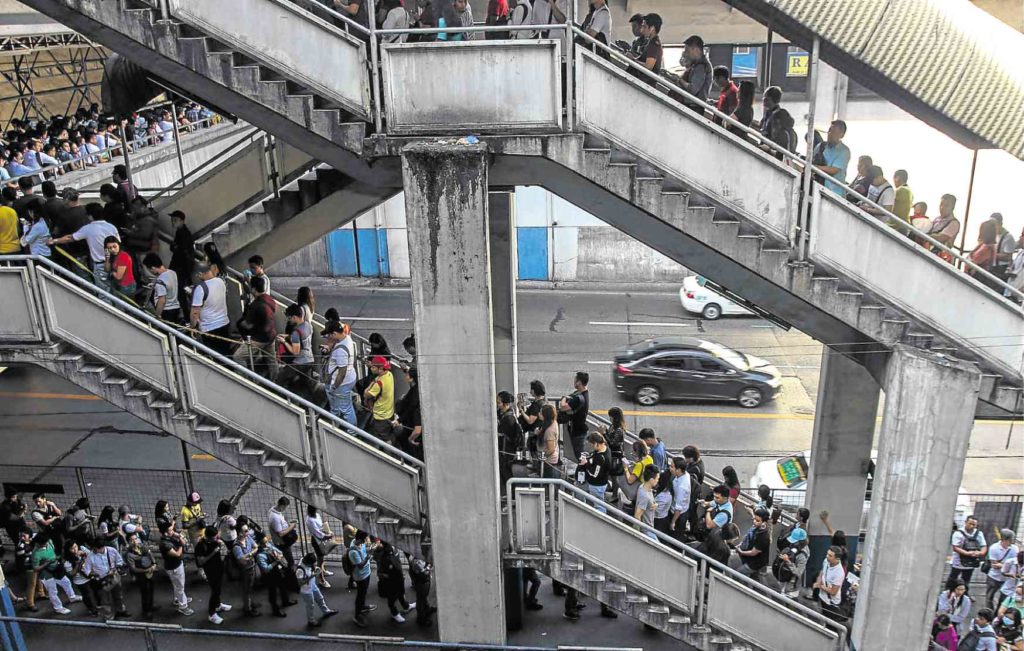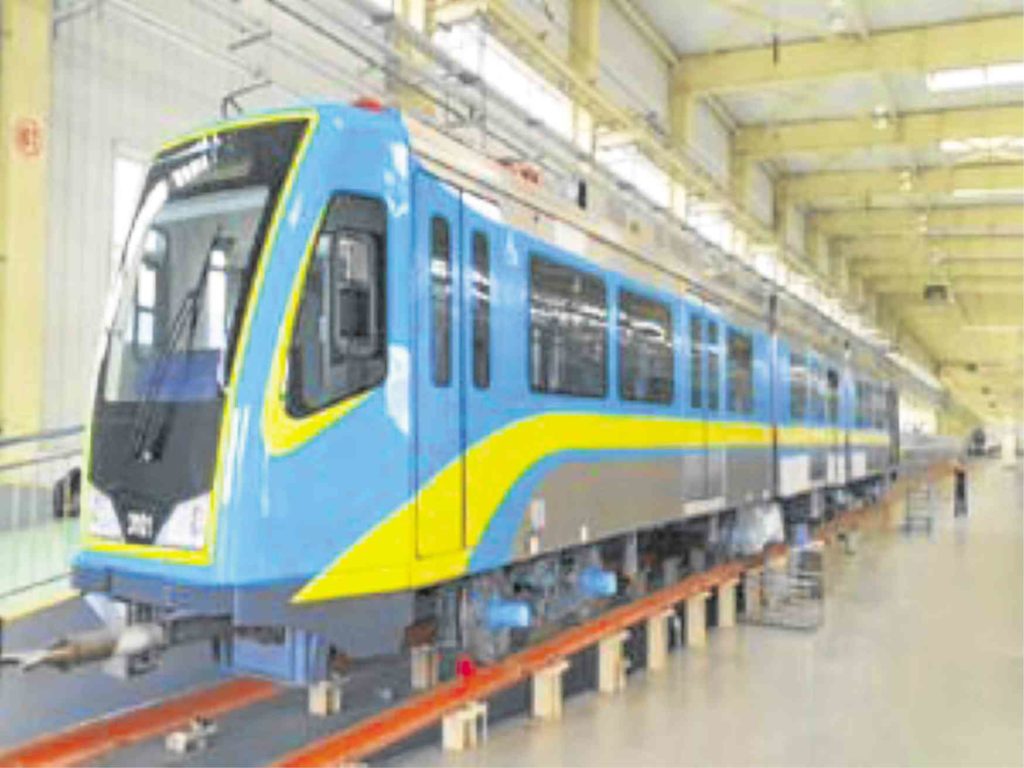Math for dummies–to finally resolve our MRT woes

Long lines emerged at the North Avenue Station of MRT 3 as the trains continued to have technical difficulties. —JAM STA. ROSA
Manila’s Metro Rail Transit (MRT) has been chugging its way more and more into the evening news. Videos show riders getting off their stalled trains, walking on platforms up high, enduring the long trek to the next station.
Last year, MRT passengers had to put up with 516 glitches, counting 449 times the train had to offload them.
Riders ask, when will the breakdowns end? The MRT used to deploy 20 light rail vehicles or cars. The number is currently down to seven.
There is a glimmer of hope, they say. The Department of Transportation (DOTr) bought 48 cars from China’s CRRC Dalian Co.
The trouble is, the issue is currently entangled in a contractual mess. DOTr asked for cars that did not weigh more than 46.3 metric tons each when empty. What Dalian delivered was heavier by 3.4 metric tons, at 49.7 each.
However, foreign expert Rolf Bieri said in a hearing chaired by Sen. Grace Poe that what mattered was the total weight of the cars. This adds the load from passengers riding on the train. Next, divide the total weight by the number of axles. That yields the weight pressed on each axle and on the tracks.
The capacity of the existing MRT is 394 people per car, with 74 seated and 320 standing. The latter assumes the extreme case of eight people per square meter. Try to picture that. The image may look absurdly congested to those who do not ride the MRT, but those who do would agree.
The DOTr bidding documents thus factored in 394 passengers, each weighing an average of 65 kilograms. That resulted in a total weight per car of 25,610 kilos from the riders. Call this the sardines scenario.
To repeat, the empty Dalian cars each weigh 49.7 metric tons. Add to that the 25.6 metric tons from the riders. That makes a total of 75.3 metric tons.
Next, divide by eight axles. (The crux of the issue is the strain on the axle wheels and on the tracks.)
That results in 9.4 tons axle weight. This is LOWER than the maximum 10 tons set in the DOTr request.
In short, the trains are NOT overweight even with passengers inside packed like sardines.
“The axle load is 9.4 tons but the track system is designed for 10 tons. So where is the problem for overload?” asked Bieri.
Where did the maximum of 46.3 metric tons for each empty car come from? It turns out that this is around the weight of the existing MRT cars. Perhaps the writers of the request simply did not want the new trains to be heavier than the existing vehicles. But to repeat the point, what matters is the total weight of the trains.
Unconvinced? I add more math to stress the finding.
Last year, the total MRT load was lighter, more than compensating for the extra 3.4 metric tons per Dalian car.
In 2017, the average daily ridership up to November was 23,150 per train because 20 cars were running.
The figure would shoot up further. By Feb. 13, the MRT ferried 37,638 per train as it used only seven cars. That reflects the sardines scenario.
Hence, the 2017 average was just 62 percent of the extreme passenger numbers of February.
Now convert that into weight per car. Multiply 62 percent by 25,610 kilos of the sardines scenario and that yields 15,878 kilos of passengers per car. That is 9,731.8 kilos lighter than the sardines scenario. The loss of 9.7 metric tons per car more than compensates for the extra 3.4 metric tons per car of the Dalian trains over the existing ones.
Hence, if MRT management ran 20 cars, as planned, instead of the existing seven, passengers would benefit from less congestion. And each train would carry a lighter load, causing less strain on the axles and the tracks.
Fully functional and new MRT cars, numbering 48, are available. Deploy 20 of them daily for the public good. -CONTRIBUTED
Dennis M. Arroyo describes himself as an MRT rider from the dawn of the millennium. He is also an economist, a former director of the National Economic and Development Authority. His views do not reflect that of Neda’s, however.

